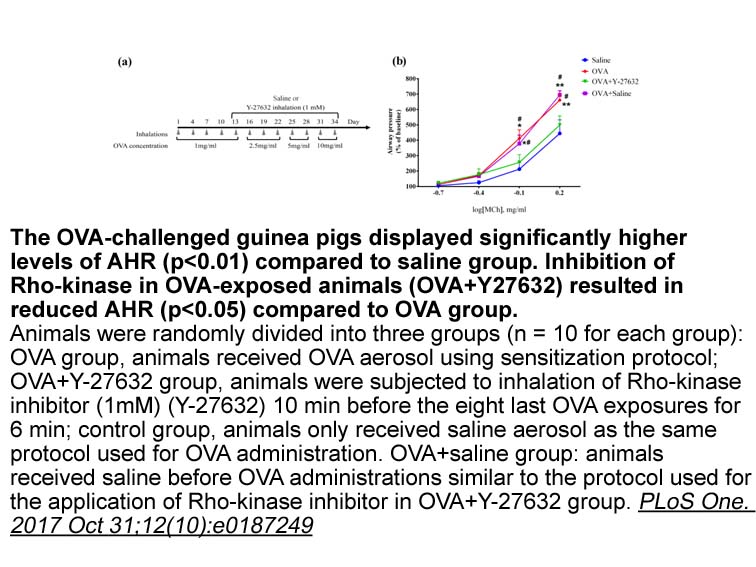Archives
br Guava tea leaves inhibit leukocyte type
Guava tea leaves inhibit leukocyte-type 12-lipoxygenase activity
Guava tea that is extracted from guava leaves contains a number of polyphenols, and is commonly taken as a dietary supplement. The extracts show a variety of beneficial effects such as antioxidative, anti-inflammatory and antiproliferative activities (Gutiérrez, Mitchell, & Solis, 2008). It is reported that phytochemicals including flavonoids which have these effects modulate the catalytic activities of cyclooxygenases and lipoxygenases (Kawakami et al., 2009, Sadik et al., 2003, Yamamoto et al., 2005). We recently showed that quercetin, quercetin glycosides and ellagic Anisomycin in guava tea leaves were major ingredients inhibiting the catalytic activity of cyclooxygenase isoforms (Kawakami et al., 2009). We also demonstrated that the catalytic activity of leukocyte-type 12-lipoxygenase as well as LDL oxidation mediated by the enzyme-overexpressing murine macrophage-like J774A.1 cells was inhibited by guava tea leaves (Kawakami et al., 2012). Administration of extracts from guava tea leaves to apoE-deficient mice significantly attenuated atherogenic lesions in the aorta and aortic sinus. The major components showing inhibitory effects on the leukocyte-type 12-lipoxygenase activity were identified as quercetin and ethyl gallate (Fig. 2) which inhibited the enzyme activity with the IC50 values of 1.6 and 0.83μM, respectively (Fig. 3).
to apoE-deficient mice significantly attenuated atherogenic lesions in the aorta and aortic sinus. The major components showing inhibitory effects on the leukocyte-type 12-lipoxygenase activity were identified as quercetin and ethyl gallate (Fig. 2) which inhibited the enzyme activity with the IC50 values of 1.6 and 0.83μM, respectively (Fig. 3).
Chinese tea leaves inhibit leukocyte-type 12-lipoxygenase activity
Chinese teas extracted from a variety of Chinese plant leaves are taken for health benefits in South China. Catechins such as epigallocatechin gallate and epicatechin gallate contained in tea leaves are known to show beneficial effects on inflammation and cardiovascular disease (Trevisanato & Kim, 2000) and inhibit several enzymes including leukocyte-type 12-lipoxygenase (Yamamoto et al., 2005). We isolated novel compounds inhibiting the catalytic activity of leukocyte-type 12-lipoxygenase from Qing Shan Lu Shui (Ligustrum robustum (Roxb.) Blume) of the family Oleaceae (Ito et al., 2013). The tea leaves were extracted with 50% aqueous ethanol followed by ethyl acetate. The 30% aqueous ethanol portion of ethyl acetate extracts was fractionated using reverse-phase HPLC to isolate fractions showing potent inhibitory effect on leukocyte-type 12-lipoxygenase activity. Further purification by reverse-phase HPLC yielded two novel monoterpenoids, namely, ligurosides A and B (Fig. 2). The trans isomer of the p-coumaroyl moiety in liguroside A was converted to its cis isomer in liguroside B under light conditions, such that trans and cis isomers are present as an equilibrium mixture (Ichiyanagi et al., 2005, Masuda et al., 1992, Tian et al., 1999). Ligurosides A and B inhibited the catalytic activity of leukocyte-type 12-lipoxygenase with IC50 values of 1.4 and 0.7μM, respectively (Fig. 3). p-Coumaric acid as well as triphenylphosphine-reduced compounds showed much less inhibition of leukocyte-type 12-lipoxygenase activity, suggesting that the inhibitory effect of ligurosides A and B was attributed to the hydroperoxy group of the monoterpene unit in these compounds.
Conclusions
Because of significant contribution of leukocyte-type 12-lipoxygenase to the initiation and progress of atherosclerosis, the enzyme could be a target for the prevention of this disease. It is conceivable that compounds showing the inhibitory effect of leukocyte-type-12-lipoxygenase also play a role in attenuation of atherogenesis as radical scavengers (Gutiérrez et al., 2008). However, most clinical trials failed to demonstrate a beneficial effect of certain radical scavengers such as α-tocopherol, β-carotene and ascorbate which do not inhibit the lipoxygenase activity on cardiovascular diseases (Kris-Etherton et al., 2004), suggesting that radical scavenging effects might not be enough for the inhibition of atherosclerosis development. We found that liguroside A as well as quercetin and ethyl gallate also inhibited the catalytic activity of 5-lipoxygenase and platelet-type-12-lipoxygenase (Kawakami et al., 2012), suggesting that the inhibition of these enzymes by these compounds might also contribute to the prevention of atherogenesis (Kühn et al., 2015, Radmark et al., 2015). Thus, the atheroprotective effect of these compounds may be attributable not only to the inhibitory activity of leukocyte-type 12-lipoxygenase but also to other lipoxygenase-inhibitory and radical scavenging activities. Further analysis of the absorption and metabolism after intake of the food containing inhibitors of leukocyte-type 12-lipoxygenase activity is needed to elucidate the beneficial effect on the prevention of atherosclerosis.